Want to set up your own online store? Want to manage it yourself and not depend on a cloud solution? Both WooCommerce and OpenCart deliver the freedom and flexibility to manage your own store your own way, so which should you choose?
The decision isn’t as easy as you might think, which is why we have put this comparison together.
OpenCart vs WooCommerce is a detailed comparison of two leading eCommerce platforms. We installed, built, tried and tested both and performed all those tasks a new online store would need to do.
All so we could give you the most accurate idea possible about the strengths and weaknesses of these two leading eCommerce platforms.
We’ll cover all the essentials, ease of use, costs, payment options, performance, support, security, customization options and scalability.
By the end of this article, you should have a much clearer idea of which platform you want to use for your online store!
10 Features Every Online Store Should Have
While online stores come in all shapes and sizes, there are a few key features they should all have.
Those features include:
Fast performance – Shoppers want their products and they want them now. Every eCommerce store should load quickly to not keep customers waiting. There should also be a simple path to purchase with minimal distraction.
Ease of use – Logical categories, search functions, featured products, product carousels and other features can all help customers find what they are looking for. Every store should have them!
Frictionless checkout – Minimal distractions, the shortest time possible to buy and pay, fast and plentiful payment gateways and one-click purchasing can all grease the wheels to a purchase.
Guest checkout – Some would say guest checkout, where you don’t have to log in or create an account, is the ultimate frictionless checkout. You can offer this using payment gateways like Amazon Pay and PayPal.
Fully-responsive website – Over half of all web use was mobile last year and that is set to grow in 2021. All online stores need a fully responsive theme and store elements that work on any screen size. 79% of smartphone users have made a purchase online using their mobile device in the last 6 months!
FAQ section – Answering questions before they get asked is a sure way to win custom. You can do that in multiple ways but FAQ sections are very useful. You can then leverage FAQ schema to help the overall visibility of your store.
Security – Security is the core of trust which are two essential ingredients in eCommerce. You should implement multi-layered security that includes a firewall, SSL certificates, two-factor authentication and secure payment gateways to provide security in order to build that trust.
User reviews – User reviews are known as social proof and are incredibly powerful in selling. Over 88% of shoppers say reviews influence their purchasing decisions so you should definitely include them!
Related items section – Related items are a cross-selling tool that can significantly impact revenue. They provide the opportunity to showcase similar products and influence buyer behaviour with ‘Other shoppers who bought X also bought Y’ messages.
Clear returns policy and terms and conditions – The more transparent you are, the more trust you generate. This will have a positive impact on buyer behaviour. One way to do that is to add plain English terms and conditions and clear, transparent returns policies.
Now you have an idea of some of the essential ingredients of an online store, let’s see which platform delivers them!
OpenCart vs WooCommerce – Brief Overview
Overview of OpenCart
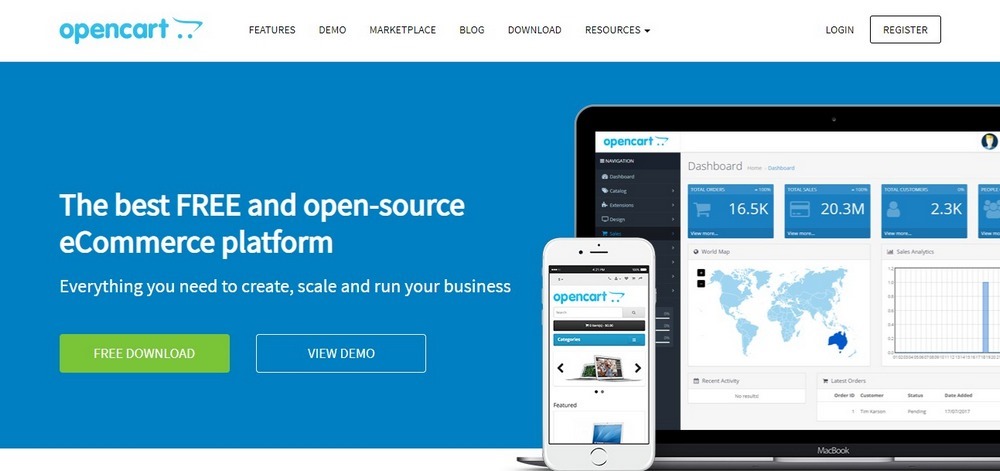
OpenCart has been around since 2005 with the first version launching a year later. It’s an open-source platform that uses PHP and MySQL to deliver a reliable, scalable eCommerce solution that makes it easy to set up and run an online store.
OpenCart is a standalone system designed to provide a complete framework for your store. Where WooCommerce relies on having WordPress as the foundation, OpenCart is completely self-sufficient. You will need a domain name and hosting but not much else to get you started.
OpenCart has thousands of modules (plugins) and themes to add new features and add a unique look to stores. They are all housed in the OpenCart Marketplace, a single repository of free and premium products designed specifically for OpenCart.
Overview of WooCommerce
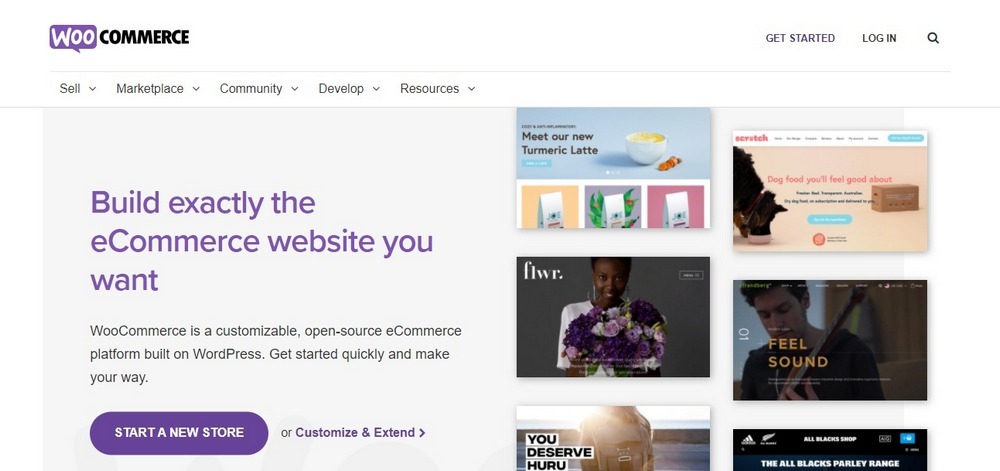
WooCommerce is a WordPress plugin designed to deliver the same store experience as OpenCart. The company, WooThemes, has been around since 2008, so is a similar age to OpenCart. They began developing WordPress themes and then plugins before moving on to WooCommerce.
WooCommerce is a WordPress plugin, so will require an existing WordPress installation to work. You will also need a domain and hosting but WordPress and WooCommerce are free to use so setup costs are minimal.
WooCommerce is also open-source, easy to use and designed to make it as simple as possible to build an online store. WooCommerce also has a huge marketplace with thousands of plugins and themes.
Our own Astra theme also has WooCommerce specific website templates and other website templates.
Below is our own summary table complete with our own scores for each OpenCart and WooCommerce.
OpenCart vs WooCommerce – Detailed Comparison
| OpenCart | WooCommerce | |
| Features | ⭐⭐⭐⭐ | ⭐⭐⭐⭐⭐ |
| Ease of use | ⭐⭐⭐ | ⭐⭐⭐⭐ |
| Cost | ⭐⭐⭐⭐ | ⭐⭐⭐⭐ |
| Payment options | ⭐⭐⭐⭐ | ⭐⭐⭐⭐ |
| Performance | ⭐⭐⭐ | ⭐⭐⭐⭐ |
| Support | ⭐⭐⭐⭐ | ⭐⭐⭐⭐ |
| Security | ⭐⭐⭐ | ⭐⭐⭐⭐ |
| Customization | ⭐⭐⭐⭐ | ⭐⭐⭐⭐ |
| Scalability | ⭐⭐⭐⭐ | ⭐⭐⭐ |
The table above provides an overview of the strengths and weaknesses of each eCommerce platform so now let’s take a closer look at each of them.
OpenCart vs WooCommerce – Features

Both OpenCart and WooCommerce offer lots of features covering every aspect of running an online store. But which offers more or better?
OpenCart
OpenCart covers all the bases. It includes a powerful admin dashboard, unlimited listing options, advanced user management, payment gateways, thousands of extensions, support for multiple currencies and languages and a whole lot more.
OpenCart also has over 13,000 extensions to either improve existing features or add new ones.
There is everything the new or small store owner could need available with OpenCart.
WooCommerce
WooCommerce is equally feature rich. It has its own user dashboard, shipping options, listing options, user management tools, over a hundred payment gateway options and a library of hundreds of extra extensions.
When you add WordPress themes and plugins into the mix, your pool of features widens spectacularly. There are literally thousands of WooCommerce themes and many thousands of plugins. Most will be fully compatible with WooCommerce as well as WordPress.
Our own Convert Pro, Schema Pro and WP Portfolio are designed to complement both WordPress and WooCommerce.
Features – Verdict
Both platforms offer a huge variety of built-in features and ones you can add with extensions and plugins. Both have a huge range of themes to add individuality and both cover all the needs of a beginner all the way to advanced stores.
However, as WooCommerce can also utilize the many thousands of WordPress themes and plugins, a whole new work of expansion is made available. We think this gives WooCommerce the edge.
OpenCart vs WooCommerce – Ease of Use

With ease of use, we look at setting up, adding products and running your store. While setup is a one-time thing, adding products and managing your store are going to take up a lot of your time.
Therefore, it’s important to know which is easy to use and which suits your style of working.
Setup
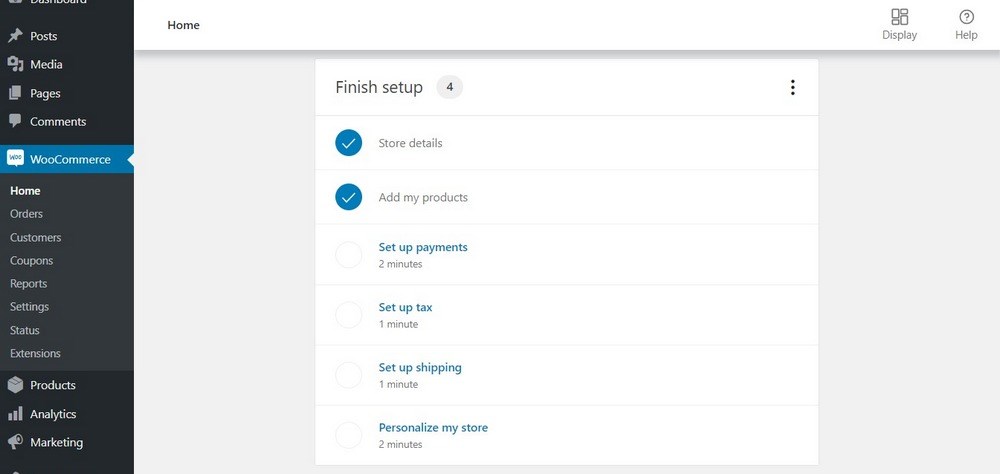
OpenCart
OpenCart is very straightforward to set up and use. You don’t need a WordPress installation to set up OpenCart but you do need to be familiar with FTP.
You will need to download OpenCart, unzip it, upload the Upload folder to your web host using FTP and manually set up a MySQL database. While that might sound complicated, it is actually quite straightforward and OpenCart has good documentation to walk you through it.
WooCommerce
WooCommerce is a plugin so you will need an existing WordPress install to get it working. That means installing WordPress using cPanel or other installer on your web host and installing the WooCommerce plugin. Some web hosts will preinstall WordPress for you.
There is no manual upload or setting up of databases here. Everything is done by the WordPress installer. Store setup, database setup and WordPress setup all use wizards to walk you through the entire process.
Adding Products
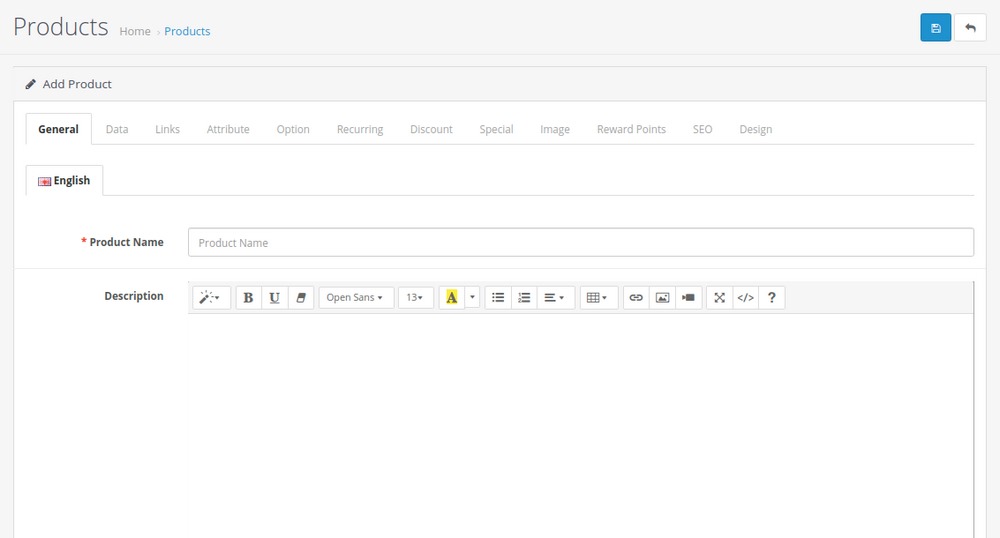
Adding products is something you’re going to be doing often when running your store so the process had better be simple.
OpenCart
OpenCart has a very straightforward process for adding products. Log into the main Dashboard, select Products, select the small blue ‘+’ icon at the top right, add the product details, images, tags and anything else. Then select the small blue ‘save’ icon at the top right.
Don’t forget to work through the tabs at the top of the screen so you can add everything required.
WooCommerce
WooCommerce has a similar system for adding products. Log into WordPress, select Products from the WooCommerce menu, select Add New, add your descriptions, prices, images and product details.
If you have ever used WordPress before, the process of adding a product is very much like adding a new blog post. It’s simple, familiar and very easy to do once you know how. Just don’t forget the tabs in the Product Data box!
Running the Store
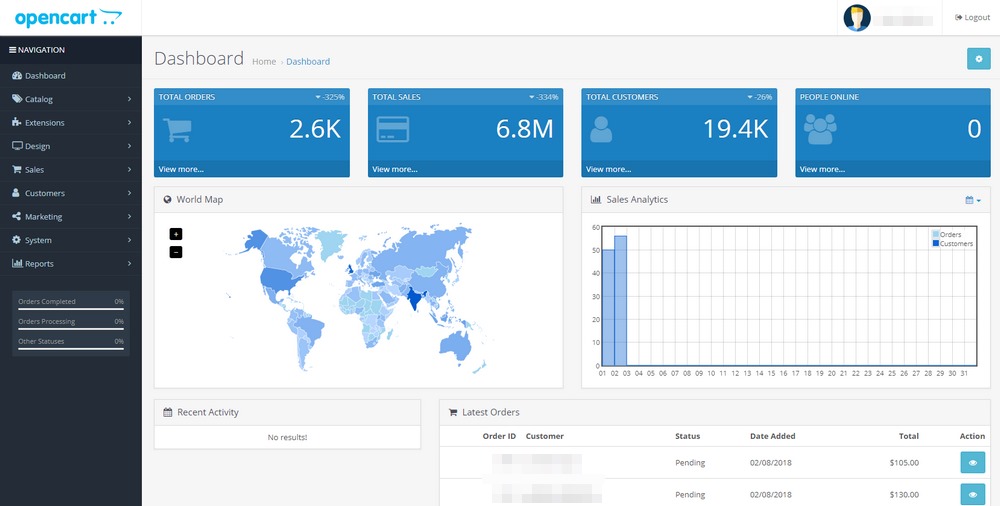
Running the store requires a clear, concise management dashboard and simple processes to manage stock, cash flow, deliveries and all those little things that make a store work.
OpenCart
OpenCart has a superb user dashboard. It’s clear, has a set of widgets showing sales, orders, customers and online customers. You can add or remove widgets as required to highlight other elements.
You can drill down from each widget to see specifics for each. You can also view order details and use the side menu to see exactly what’s going on in your store.
WooCommerce
WooCommerce has a similar user dashboard. It isn’t quite as colourful or as graphically pleasing as OpenCart but is it just as easy to use. It can also show orders, sales, activity, open orders and anything else you want to see.
It can also be customized by adding widgets and you can drill down into entries to see exactly what’s going on with everything that’s happening.
Ease of Use – Verdict
Setup is much easier with WooCommerce. Adding products is the same for each platform and the dashboard is equally usable in both. We would say that WooCommerce has the edge because setup is so simple and doesn’t require you to manually set up a database.
OpenCart vs WooCommerce – Cost Comparison

How much does each store cost to run? How much are themes or plugins? Let’s find out!
OpenCart
OpenCart is free and open source. You will need a domain and hosting but that’s the same for WooCommerce too. If you want to use the marketplace, some themes and extensions are free while others cost money.
Some extensions cost as little as $39 while others are a more aspirational $5,000 per month or year.
WooCommerce
WooCommerce is also free and open source and you will need a domain and hosting.
There are also themes and extensions for WooCommerce, some of which are free while others cost between $29 and $199 per year. Our own Astra theme is free with a premium option.
WooCommerce also has a wider range of third-party themes and plugins which widens the scope considerably. These are purely optional though.
Cost Comparison – Verdict
There is no clear winner here so we’ll call this one a tie. Both platforms are free and open source. Both platforms offer hundreds of free themes and plugins. Both have premium plugins priced sensibly with some priced not so sensibly.
WooCommerce does have the advantage of more third-party themes and plugins but you don’t need any of them to run your store.
OpenCart vs WooCommerce – Supported Payment Options
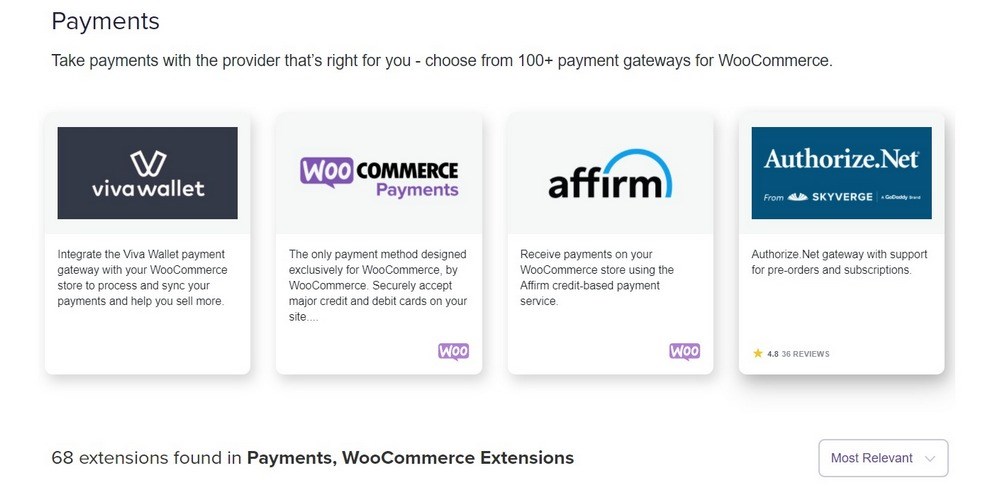
The more payment options you offer customers, the more likely they are to want to use your store. You can add these options using payment gateways. Apps provided by payment processors like Stripe or PayPal that integrate into your store.
OpenCart
OpenCart supports a large number of payment gateways. They include Authorize.Net, Amazon Payments, First Data, Klarna, LiqPay, Skrill, PayPal, SagePay and others. There are 36 supported payment methods in total.
You will have to pay for some of these payment options and all of them will charge fees per transaction.
WooCommerce
WooCommerce supports over 100 payment gateways including PayPal, SagePay, Stripe, Braintree, WooCommerce Payments, PayFast, Amazon Payments and others.
Lots of these payment gateways offer free plugins while others charge for the plugin. All will charge fees per transaction.
Supported Payment Options – Verdict
Both platforms provide a wide variety of payment gateway options. Both offer free and premium gateway plugins and both will have the same commission fees charged by the gateway providers.
Both platforms also support recurring payments, which is something else that can benefit store owners who want to offer subscriptions.
We think there is very little to choose between the two platforms except for the number of supported options. Therefore, WooCommerce just gets the win for supporting over 100 payment gateways.
OpenCart vs WooCommerce – Performance
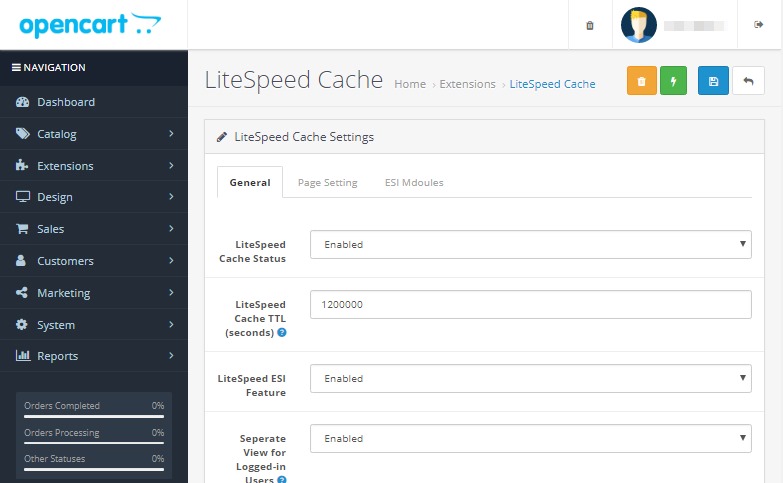
Do both platforms perform well? Do they require special servers or web hosting plans to work effectively?
OpenCart
OpenCart is a standalone platform that can work perfectly well on most hosting plans. We wouldn’t recommend using it on a shared plan as there will be too many other websites using those resources. Other hosting plans should be fine.
We installed OpenCart on a managed WordPress hosting plan and saw no obvious slowing of performance or slow loading of pages. While not a true representation of real life, it was as close as we could get!
WooCommerce
WooCommerce works with WordPress to deliver the eCommerce experience. Like OpenCart, we wouldn’t recommend using shared hosting. WordPress hosting or dedicated WooCommerce hosting works best.
We used the same hosting plans to test WooCommerce and saw similar performance. WooCommerce does have an advantage though as it can use WordPress optimization plugins to help streamline performance, cache pages and optimize the database.
Performance – Verdict
OpenCart and WooCommerce both perform well on higher tier hosting plans. We experienced no noticeable slowdown in performance in either during testing. Both performed well with pages loading quickly and the user dashboard being responsive.
Both platforms have optimization plugins to help speed up performance and provide statistics should you need them.
However, OpenCart has fewer options than WooCommerce for caching and database optimization. Two very useful methods of maintaining performance of eCommerce stores.
The win goes to WooCommerce for those reasons.
OpenCart vs WooCommerce – Support

Both platforms may be accessible and easy to use but we all need help sometimes. Is that help there when you need it?
OpenCart
OpenCart has two levels of support, general and commercial. General support is via the website and is on a best endeavour basis. Commercial support costs $99 for a single fix or $99 per month for ongoing support.
OpenCart also has extensive documentation and a very helpful user base. Even if you don’t want to pay for support, you can usually find the answer in the docs or the forum.
WooCommerce
WooCommerce is similar. Support is provided for marketplace purchases while support for the platform itself is best endeavour. There is extensive documentation covering every aspect of running a store and a very vibrant forum for everything else.
WooCommerce also seems to have more resources across the internet. While both platforms are generously covered, it seems WooCommerce is the more popular.
Support – Verdict
Having commercial support is a definite bonus for larger customers who can afford it. Otherwise, the documentation and forum have answers to most questions and a friendly user base.
WooCommerce doesn’t have a paid support function but also has superb documentation and a lively forum. There is also a wider range of third-party websites offering tutorials and how-tos. More so for WooCommerce than for OpenCart.
Therefore, the verdict here is mixed. If you’re a larger organization who can pay for support, OpenCart has the advantage. If you’re a new or smaller store, WooCommerce has you covered.
OpenCart vs WooCommerce – Security
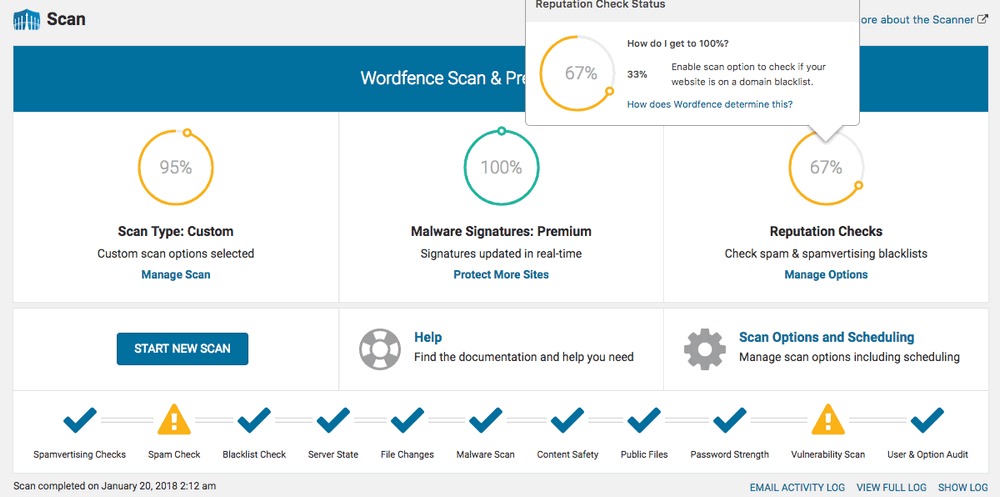
Security is everything online. That’s especially true if you’re dealing with customer data and their payment details. Even if you don’t store those details, you still need to be secure!
OpenCart
OpenCart is relatively secure out of the box. It also recommends some practical ways to secure the platform using permissions and has a built-in fraud tool accessible from the dashboard. There is also a selection of extensions that can be added to extend security further, some are free, others are premium.
Using OpenCart alongside SSL encryption, mainstream payment gateways and the precautions offered by the developers will provide a robust store capable of withstanding most attacks.
Combining that with a secure web host and some of those security extensions can take that much further.
WooCommerce
WooCommerce uses WordPress and both will need securing to make them safe. The good news is that the plugins and methods we use to secure one will secure the other.
Used with SSL encryption and compliant payment gateways, the transaction element of WooCommerce is already secure. You should use extra precautions for the back end though. That includes using two-factor authentication, data encryption and other methods.
Our guide to securing WordPress can help with most of that.
Security – Verdict
Both OpenCart and WooCommerce are both relatively secure out of the box. Both will need to be hardened further to protect them from more determined attacks. Both use extensions to provide that protection.
Both systems will also be dependent on SSL, a secure web host, data encryption and compliant payment gateways to add more security to the customer journey.
The verdict here is a tight one. Both need help to be secure but there are far more security options for WooCommerce because of its reliance on WordPress. This is both a pro and a con as WordPress is also the most targeted system because of its popularity.
The number and quality of security solutions for WordPress offsets this vulnerability though, so WooCommerce gets the win.
OpenCart vs WooCommerce – Customization

How easy is it to make your store your own? How many opportunities do you have to add extra features?
OpenCart
The OpenCart Marketplace says it has over 13,000 free and premium themes and extensions you can add to your store. We didn’t count them but there are a lot to choose from!
Extensions cover themes, language support, payment gateways, shipping handlers, lead generation, SEO, optimization tools, reporting and a host of other tools and features.
There is an extension here for just about every conceivable use so you should definitely find what you’re looking for.
WooCommerce
WooCommerce has its own Extensions Store featuring hundreds of free and premium plugins and a dozen or so themes to extend your store.
Plugins cover payment gateways, tax, stock control, shipping, marketing, SEO, analytics and hundreds of others. Like OpenCart, there is an extension here for every conceivable use.
WooCommerce has more to give though. There are also hundreds of third-party free and premium WooCommerce themes and plugins offered elsewhere. Dozens of developers, including us at Astra offer free and premium themes and plugins to further extend WooCommerce.
Customization – Verdict
OpenCart and WooCommerce both have full coverage of extensions and themes. There is an extension available to cover every possible need you can think of.
Most OpenCart extensions are plug and play. Some do require a little coding or database configuration though.
Most WooCommerce extensions are plug and play and any configuration is most often performed at the dashboard. This is a small but important distinction, especially for newcomers.
WooCommerce is the winner here. For ease of use of extensions and the extra availability from third-party developers.
OpenCart vs WooCommerce – Scalability
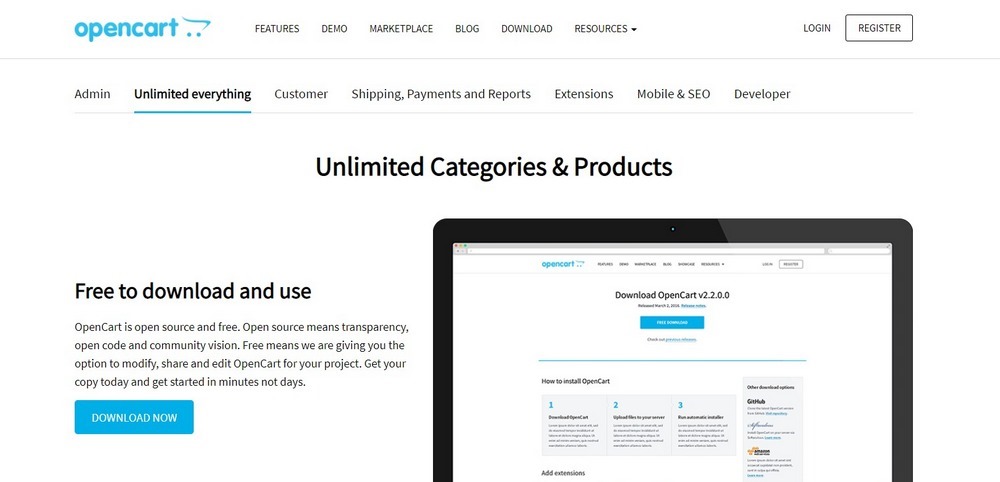
Your store may be small now but what about in the future? What happens if you want to grow or launch more stores? Can OpenCart and WooCommerce support that?
OpenCart
OpenCart is a database-driven store platform so is theoretically infinitely scalable as long as your hosting plan can support it. You can add as many products as you like, as many categories as you like and feature as many categories as you can manage.
OpenCart also has another scalability feature. One installation can support multiple stores. A bit like WordPress Multisite, you can set up individual stores within a single OpenCart instance and have them all work independently while being able to manage them from a single dashboard.
WooCommerce
WooCommerce is also theoretically scalable as it’s also a database-driven store platform. As is WordPress. It has the same option to add an infinite number of products, categories and store elements as your web hosting plan can support.
WooCommerce does not have the same ability to run multiple stores from a single instance though. You can use WordPress Multisite to create stores but would need to install WooCommerce individually onto each. That would also require individual management of each store separately.
Scalability – Verdict
Both platforms can scale to a huge size within a single store and can feature as many products as you can manage. However, were you to want to extend your retail empire to multiple stores OpenCart has definite advantages.
The ability to launch multiple stores from a single instance and manage them all from the same dashboard makes this an easy win for OpenCart.
OpenCart vs WooCommerce – Pros and Cons
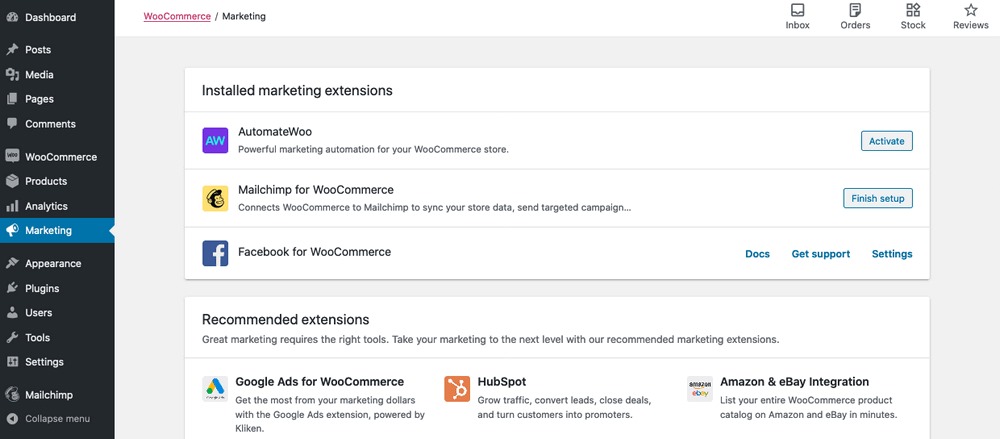
Finally, we thought you might find it useful to view a list of pros and cons for both platforms. That way you can quickly see the features and benefits of each and perhaps decide which is best for your needs.
Pros of OpenCart
- Very user friendly
- Attractive management dashboard
- Doesn’t require a WordPress installation to work
- Huge marketplace of extensions and themes
- Supports a wide range of payment gateways
- Can be made very secure using extensions
Cons of OpenCart
- Setup requires manual database creation
- Modest technical skills required
- Higher learning curve
Pros of WooCommerce
- Very user friendly
- Accessible management dashboard
- Wizards for everything
- Utilizes the power of WordPress
- Huge marketplace of extensions and themes
- Numerous third-party options for themes and plugins (including Astra)
Cons of WooCommerce
- Requires a WordPress installation to work
- Is susceptible to the same vulnerabilities as WordPress
Final Thoughts
We appreciate there is a lot to take in here. Both WooCommerce and OpenCart have a lot to recommend them and a few downsides. There is also a lot to take into account when measuring one against the other.
While we aren’t going to tell you which to choose, we recommend WooCommerce. It is easier to use, simpler to manage and has all the benefits of WordPress.
It also has some genuinely beautiful themes and some seriously powerful plugins. Both deliver a significant advantage to new store owners.
What do you use for your online store? Did you choose WooCommerce or OpenCart? Tell us your thoughts below!
Disclosure: This blog may contain affiliate links. If you make a purchase through one of these links, we may receive a small commission. Read disclosure. Rest assured that we only recommend products that we have personally used and believe will add value to our readers. Thanks for your support!
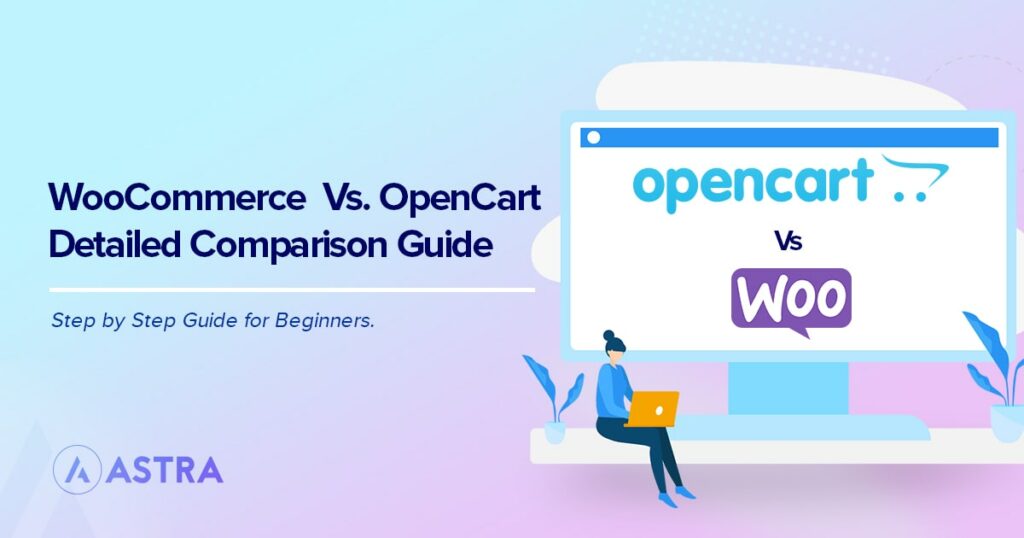
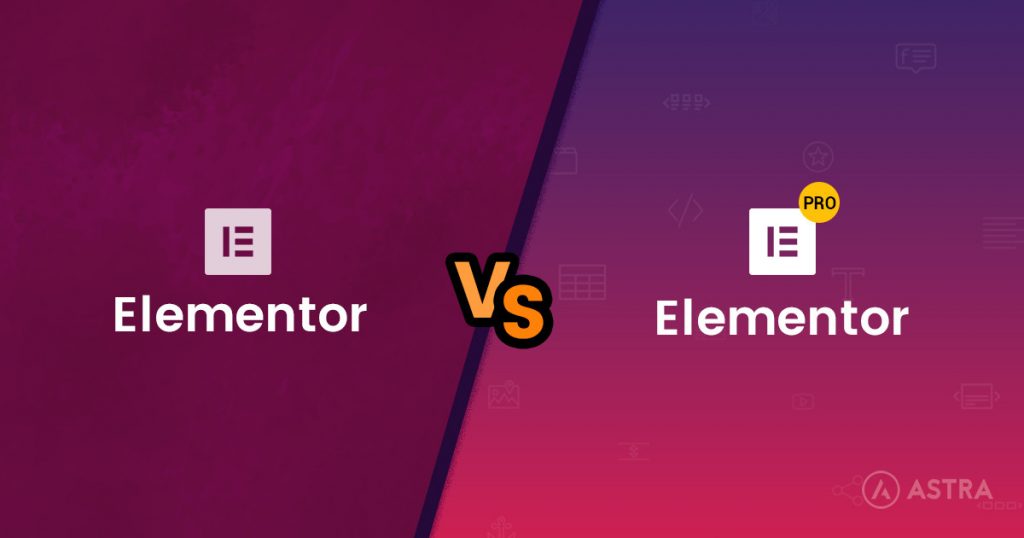


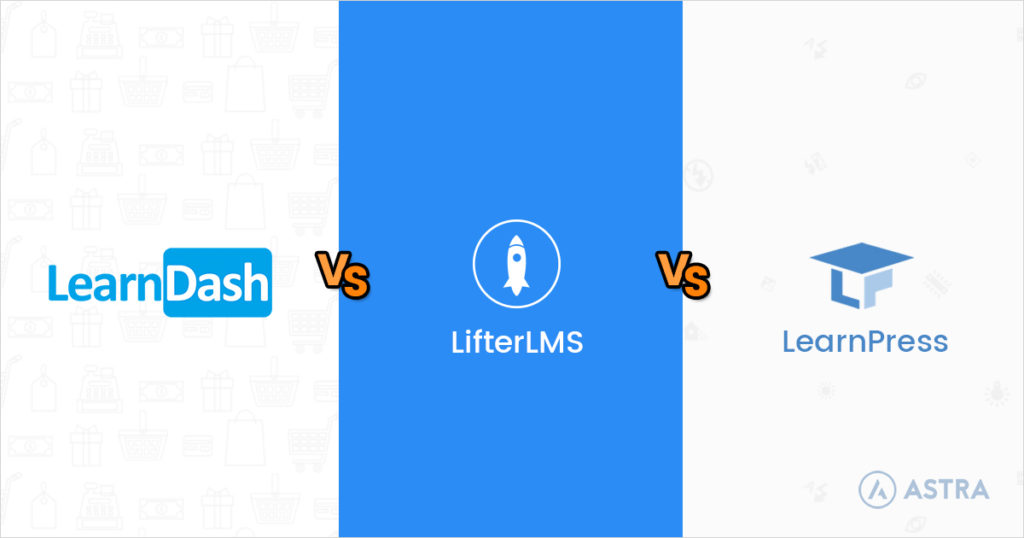

It’s a very valuable article.